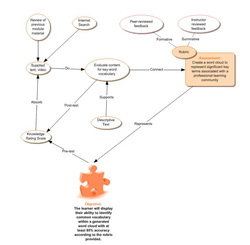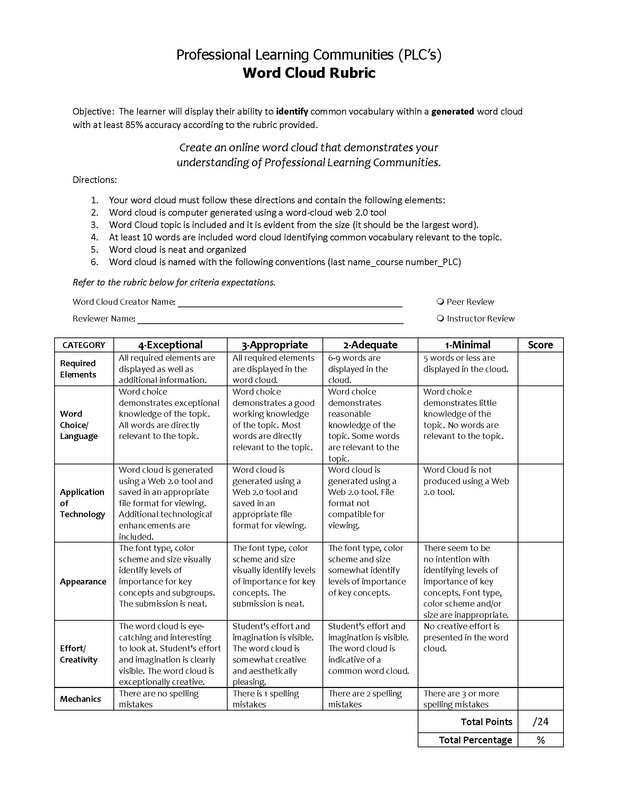A Picture is Worth 1,000 WordsA Picture is Worth 1,000 Words is the culminating lesson within Module 1. The objective of this lesson is to synthesize the content and understanding within the first two lesson activities coupled with additional internet research to identify common vocabulary associated with PLC's. This common terminology will be referenced throughout the course. Identifying those words and understanding their weighted significance will further support learning of more narrow, detailed content. Careful considerations will be necessary to determine which terms are key terms/ideas and which are supporting terms/ideas.
 Select image for magnified viewing. Select image for magnified viewing.
Following this module, class participants will be prepared to move into micro-content, deeper learning with sub-categories within PLC's that make their presence successful within an educational setting. Students will collect, categorize, and classify vocabulary from research and reading based upon importance. They will post their word cloud to a discussion post. Students will be paired together and each partner will use the supplied rubric to provide peer-feedback as a formative assessment.
Students will then have the opportunity to refine their word cloud and re-submit for final review by the instructor. Findings show that many students find their best learning takes place when opportunities for feedback and criticisms are available via early versions prior to final submissions (Wiggins, 2010). The summative assessment will use the same rubric. Flexibility and diversity within this activity has been integrated through offering the choice of which word cloud generator they would like to use. Links are provided in the activity card for an array of suggested web 2.0 tools available. Incorporating peer feedback offers students opportunities to revise their thoughts and word choices prior to final submission to increase authenticity of each student's artifact. Both submissions and rubrics will be evaluated to ensure classmates are refining their work and have not included elements of another. An authentic rubric has been developed to accompany this activity. It includes assessment expectations, which will be reviewed prior to the assignment activity. The review will allow for students to clarify misunderstandings, ask questions and raise concerns, if any. It will also provide feedback in the event the rubric needs modification prior to its use for the assignment. This format supports a student-centered model of assessment as it encourages self-assessment, collaborative-assessment, and facilitator assessment as noted by Koohang, Riley, Smith & Schreurs (2009). |
Activity pages may not display appropriately, or full screen, in Internet Explorer.
Alternate viewing file formats are available below for download.
| ||||||||||||||||||||||||
